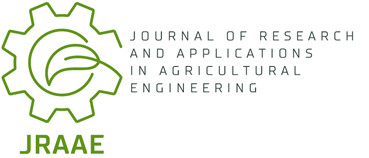Current issue
Online First
Archive
Instructions for Authors
Guide for Authors
Peer Review Policy
Research Ethics Policy
Ghostwriting and Guest Authorship
Copyright
Open Access Policy
Plagiarism
About the Journal
Aim and Scope
Scientific Board
Publisher
Editorial Board
Indexing in Databases
Personal Data Protection
Repository Policy
Contact
ORIGINAL PAPER
Knowledge about organic food among citizens of Warszaw
Journal of Research and Applications in Agricultural Engineering 2009;54(3):164-171
KEYWORDS
ABSTRACT
Nowadays Poland is during the period of dynamically increasing number of organic farms and organic processing plants. For this reason there is a need of investigations concerning the development of the organic products market, which is the main factor responsible for the development of organic farming system in all countries. The main goal of presented research was the qualification of consumer's knowledge about organic products and organic agriculture system and to indicate the range of necessary activities facilitating the dynamic development of organic products market in Poland. The questionnaire investigations were led in 2006-2008 in chosen consumers groups such as: the customers of organic shops, pupils from secondary schools, students, employees of corporations engaging Polish Television - TVP and those people who are responsible for promotional campaign of organic agriculture in Poland. Over 600 persons together took part in the investigations. The obtained results show, that consumers' knowledge about organic food and organic agricultural system is low. Insufficient information in media is the main cause of such state as well as too complicated method of labeling of the organic products. Despite this majority of the respondents would buy the organic products willingly, if they were easily accessible, clearly labeled and cheaper. In consumers opinion, the interest for organic food is mainly the result of their concern for own health and of the members of the closest family. Moreover the investigation results unambiguously show that the standardized labeling system of organic product should be worked out as soon as possible. Introduction after the German, Austrian or Swiss example of Eko-national sign would be a good solution.
REFERENCES (17)
1.
Bavec F., Bavec M.: Organic production and use of alternative crops. Wyd. Taylor & Francis Boca Raton, London, New York., 2007, ss. 230.
3.
Kolerska E.: Znaczenie marek w procesie sprzedaży produktów rolnictwa ekologicznego. Journal of Research and Applications In Agricultural Engineering. Poznań, 2008, vol. 53 (3), s. 146-148.
4.
Kucińska K., Pelc I., Artyszak A.: Development of organic agriculture in Poland. Mat Konf. European Joint Organic Congress. 30-31.05.2006, Odense, Denmark, 2006, s. 118-119.
5.
Łuczka - Bakula W., Smoluk - Sikorska J.: Porównanie poziomu cen warzyw ekologicznych i konwencjonalnych. Journal of Research and Applications In Agricultural Engineering. Poznań, 2008, vol. 53 (4), s. 6-8.
6.
Moschitz R, Stolze M.: Organic forming Policy in Europe. A network analisis. Mat Konf. European Joint Organic Congress. 30-31.057006, Odense, Denmark, 2006, s. 112-113.
7.
Maciejczak M: Marketing żywności ekologicznej w Europie i Polsce. Wydział Nauk Ekonomicznych, SGGW, Warszawa, 2007, www.maciejczak.pl/download/rpe-w6.pdf.
8.
Schmidke K.: Mat Konf. Pilnitz Summer Academy, HTV Dresden University of Aplied Science i Akademia Rolnicza w Poznaniu: 3-8.097006, PUlnitz,2006.
9.
Simion S.: Mat Konf. Pilnitz Summer Academy, HTV Dresden University of Aplied Science i Akademia Rolnicza w Poznaniu: 3-8.09.2006, Pillnitz,2006.
10.
Śmiechowska M., Dmowski P.: Znajomość ekologicznej produkcji i zasad Fair Trade wśród konsumentów kawy w Polsce. Journal of Research a. Applications In Agricultural Engineering. Poznań, 2008, vol. 53 (4), s. 108-115.
11.
Tymiński A.: Rynek produktów ekologicznych na świecie oraz w Polsce. WSPA, Lublin, 2005, s. 23-34.
16.
Plan działań dla żywności ekologicznej i rolnictwa w Polsce. Pr. Zbiorowa, 2006. www.min.rol.gov.pl.
17.
Żakowska-Biemans S., Gutkowska K.: Rynek żywności ekologicznej w Polsce i krajach Unii Europejskiej, Warszawa: wyd. SGGW, 2003, s. 104-105.
Share
RELATED ARTICLE
We process personal data collected when visiting the website. The function of obtaining information about users and their behavior is carried out by voluntarily entered information in forms and saving cookies in end devices. Data, including cookies, are used to provide services, improve the user experience and to analyze the traffic in accordance with the Privacy policy. Data are also collected and processed by Google Analytics tool (more).
You can change cookies settings in your browser. Restricted use of cookies in the browser configuration may affect some functionalities of the website.
You can change cookies settings in your browser. Restricted use of cookies in the browser configuration may affect some functionalities of the website.


